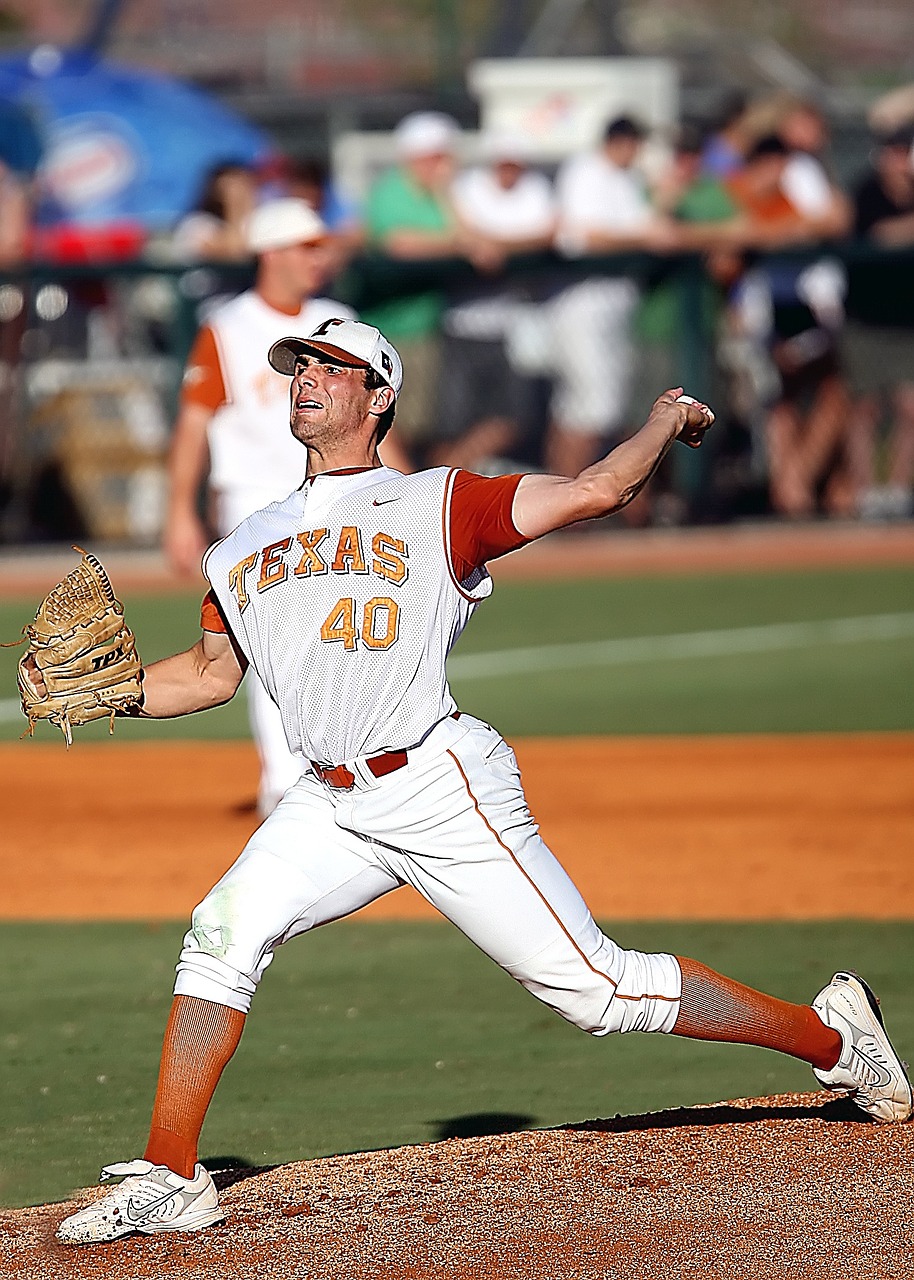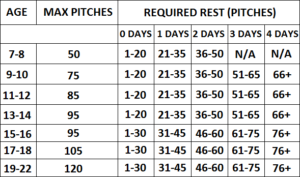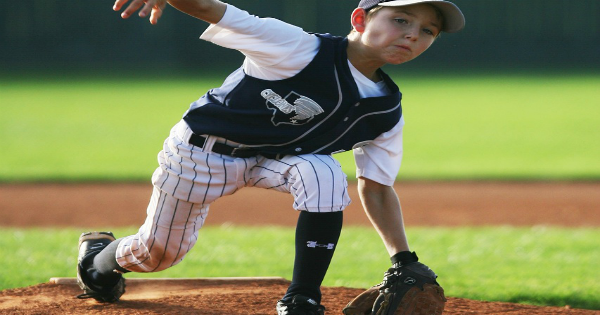I first heard of a not-to-do list from author and human guinea pig Tim Ferriss and I really liked the idea, so I figured I would put one together for youth baseball players. As Tim wrote in his blog, “not-to-do lists are often more effective than to-do lists for upgrading performance [because] what you don’t do determines what you can do.”
I’m going to try to keep the descriptions of each one relatively short, although I could probably spend an entire post on each one of them (some of them I already have).
1. DO NOT play only baseball – play multiple sports
- By playing multiple sports, you will expose yourself to different movement patterns in each sport and you will become the best athlete you can be. You will also decrease your risk for injury due to not exposing yourself to the same stressful pitching motions over
and over again (avoiding overuse). For further reading on the potential negative effects of specializing in baseball early on, read this article.
2. DO NOT avoid weightlifting
- Weightlifting is not dangerous – being weak and throwing a baseball is! The American Academy of Pediatrics released a position statement in 2001 on strength training by children and adolescents. They stated that: “strength training programs for preadolescents & adolescents can be safe & effective if proper resistance training techniques & safety precautions are followed.” I feel that as long as a child can follow instructions and has the appropriate attention span, then strength training can be safe and effective.
- A solid weightlifting program should be a staple in every athlete’s career. Multiple studies have shown that an upper & lower body strength training program (most for only ~8 weeks) resulted in increased throwing velocity as compared to non-strength training individuals. Imagine how much difference years of strength training can have if only 8 weeks of strength training can make a significant difference in throwing velocity.
- Strength training programs have been shown to have a positive effect on (among other things): muscle hypertrophy, neuromuscular firing, strength, power, agility, & anaerobic endurance – don’t those sound like things that will help improve your athletic performance!? Hard work and dedication in the weight room is one thing that can separate you from the rest of the pack and help bring you to the next level.
3. DO NOT throw a baseball all year-long
 Throwing a baseball is the most stressful action in all sports (just look at that pitcher’s arm in the picture to the right). You need time off from throwing so your body isn’t dealing with that crazy stress all year-long. This time off allows your tissues to recover and heal. If you constantly stress them, they won’t be able to fully recover and the damage will accumulate as the year goes on.
Throwing a baseball is the most stressful action in all sports (just look at that pitcher’s arm in the picture to the right). You need time off from throwing so your body isn’t dealing with that crazy stress all year-long. This time off allows your tissues to recover and heal. If you constantly stress them, they won’t be able to fully recover and the damage will accumulate as the year goes on.- The recommended time off from throwing is 3-4 months – don’t even pick up a baseball, there are plenty of better things to be doing that will help you be a better baseball player. The best thing to do is play another sport.
4. DO NOT ignore pitch counts
- Recommended pitch counts for youth pitchers have been put in place for a reason, so don’t ignore them or downplay their significance. Numerous studies have shown that youth pitchers who throw more pitches per game increase their risk of injury. One of those studies found that if you pitched more than 80 pitches per game, you were 4 times more likely to have an injury. While this information seems to be well-known, implementing a league-wide pitch count program is often not done.
- Below are the recommended pitch counts (and subsequent rest periods) that were developed by Major League Baseball & USA Baseball’s PitchSmart Campaign (click here for a detailed description of each age group):

5. DO NOT pitch through fatigue
- A study by Olsen et. Al found that “a pitcher who regularly pitches despite arm fatigue is at 36 times increased risk of injury.” This number is staggering and should be taken very seriously. Not only should you pay attention to your pitch count (see #4), but more importantly you should ‘listen’ to your body. If you or your arm feels tired – regardless of what number pitch you are on – you should stop pitching. It’s just not worth it to keep going.
6. DO NOT throw some ice on your elbow/shoulder after pitching and think that’s all you have to do
- While icing has its benefits (although its efficacy has been and still is being questioned/debated), your primary concern should be regaining lost range of motion. A study by Reinold et. Al in 2008 found that immediately after a pitching outing, pitchers lose an average of 9.5° shoulder internal rotation ROM and 3.2° of elbow extension. Another significant finding of this study was that these ROM losses were still there 24 hours after pitching. So, imagine if you never regain this motion and then pitch again. The loss of ROM begins to snowball and will eventually lead to a decrease in performance or worse, an elbow or shoulder injury.
- Watch this video on basic arm care after pitching to learn what you should do after you pitch:
[embedyt] http://www.youtube.com/watch?v=FZN6vUlNYTI[/embedyt]
7. DO NOT think showcases are the only place to “be seen.”
- On the surface, they seem like a great way to ‘showcase’ your talents, but in reality, they may increase your risk for injury. In a 2006 study by Olsen et. Al, his research found that injured pitchers went to on average 4 showcases and the uninjured pitchers went to 1 showcase.
- The timing of showcases could have a lot to do with this increased injury rate. Most showcases occur in the late fall & winter months, a time period when pitchers are reaping the consequences of a season’s worth of wear & tear. During this time, they should not be throwing; rather they should be focusing on fixing the damages of a full season and getting healthy. Instead, these showcases pressure kids to perform their best and throw their hardest…without the proper preparation period. So be careful and use discretion when choosing a showcase to attend and make sure you are physically prepared to perform.
8. DO NOT forget to perform a dynamic warm-up before playing
- Dynamic warm-ups are easy to implement, can improve performance, and potentially reduce your risk for injury. If you are one of those athletes who needs an inning or two before really feeling ready to play, you probably aren’t warming up properly. Multiple studies (too many to even list) have shown how dynamic warm-ups are superior to static stretching in preparing an athlete for performance. For further reading on dynamic warm-ups click here & below is an example of one:
[embedyt] http://www.youtube.com/watch?v=phqNGyO0aZc[/embedyt]
9. DO NOT perform long-distance running thinking it will help build up your pitching endurance
- At some point, the idea of improving pitching endurance by long-distance running (i.e. running poles) became widely accepted in the baseball culture. Unfortunately, this idea is wrong and training this way won’t have any effect on your pitching endurance. Studies have shown that VO2 (a marker of cardiovascular endurance) is not a limiting factor for pitching late into games (if it was, then marathon runners should be able to pitch forever!).
Since pitching a baseball is an approximately 2 second process, pitching relies on a different energy system (anaerobic system) than long distance running (aerobic system). If you want to improve your pitching velocity/endurance, then you should be working on building strength and power/speed. So, the type of running you should do that will help improve your pitching should be sprinting. The energy system your body uses when sprinting is the same one you will use when pitching. Sprint-work will help improve your power output and recovery from these types of bouts.
10. DO NOT forget to have fun when playing baseball!
- Last and most important: BASEBALL SHOULD BE FUN! Unfortunately, this is often forgotten or overlooked. I feel that this is primarily due to the interests/goals of the parents and coaches rather than the kids. As Bryce Harper says, “Let’s make baseball fun again!”
BONUS! DO NOT think that just because your MRI shows abnormalities you have to get surgery
- Just because your MRI showed some damage doesn’t necessarily mean that you need to get surgery. A 2002 study by Miniaci et. Al reviewed shoulder MRIs of asymptomatic pitchers and found that:
- 79% had some form of abnormality in their supraspinatus tendon (one of the rotator cuff muscles)
- 100% had some form of abnormality in their infraspinatus tendon (another one of the rotator cuff muscles)
- 79% had an ‘abnormal labrum
- 29% had AC joint arthritis
- 29% had a Hill Sachs lesion (essentially a dent in the head of the humerus).
- Interpretation of MRI results in baseball players is difficult, so make sure you have a well-informed discussion with your medical team about the findings before you make a decision on surgery.

